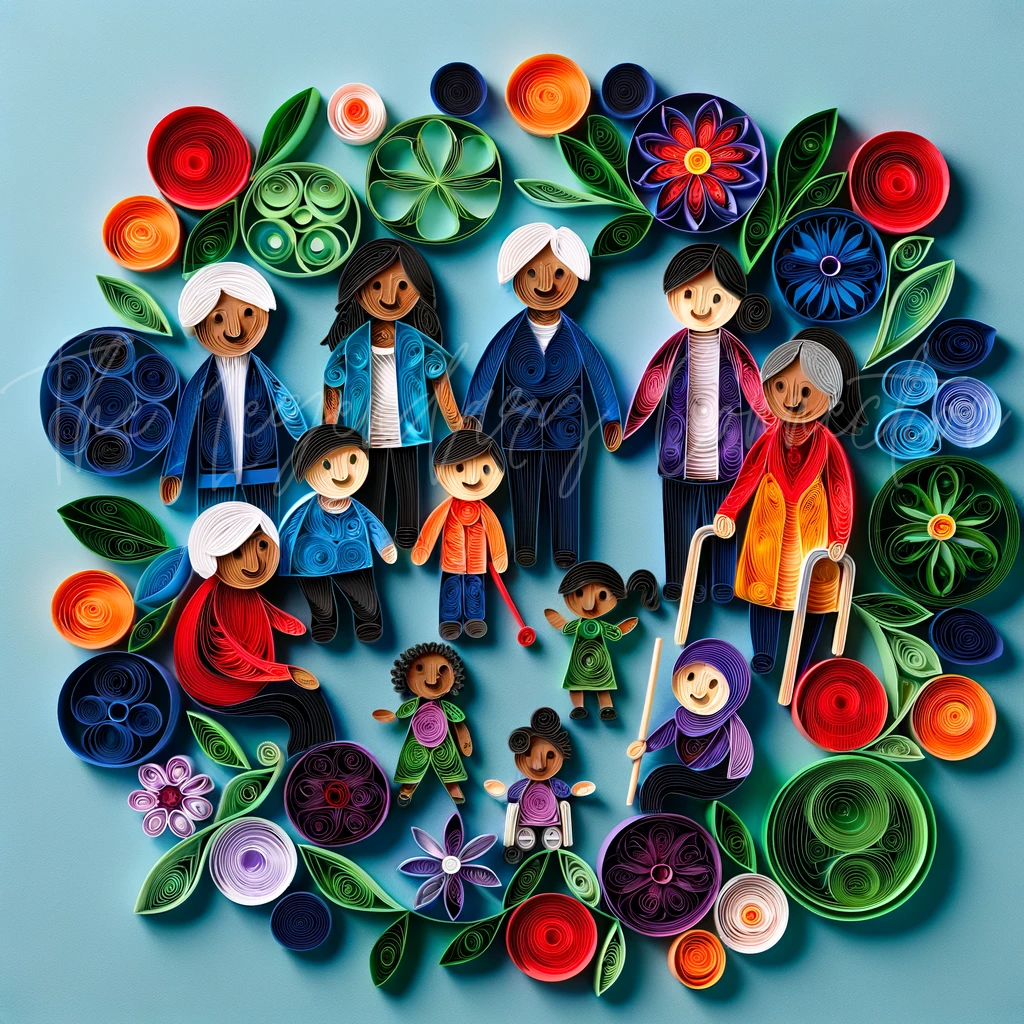The Power of Community Stories: How Shared Narratives Shape Identity & Connection
“Stories are memory aids, instruction manuals, and moral compasses.”
From bedtime tales to generational legends, storytelling is a fundamental way communities create identity and belonging. Personal and family stories help children understand who they are, but community stories provide an even greater sense of connection. They help children see their place in a larger cultural and historical framework, shaping their values and grounding them in a shared identity. Through storytelling, children learn about heritage, traditions, and the struggles and triumphs of their community, forming strong emotional ties that give them a sense of self and purpose.
Why Community Stories Matter for Children
Children thrive when they feel connected to something bigger than themselves. Community stories serve as a bridge between past and present, helping children:
Develop a strong sense of belonging by connecting with a shared history
Learn values and life lessons through real-life experiences and moral narratives
Strengthen family and generational ties through shared storytelling traditions
Build empathy and understanding by seeing themselves as part of a larger whole
By understanding their community’s stories, children gain a sense of identity and purpose, helping them navigate the world with confidence and connection.
Examples of Community Stories That Shape Identity
1. The Power of Sports Stories: Unity Through Shared Identity
Sports have long united communities, passing down legends that foster a deep sense of connection. The Boston Red Sox’s Curse of the Bambino, for example, brought generations of fans together, binding them through a shared experience of struggle and triumph. These stories help children see themselves as part of a larger group, strengthening their sense of belonging.
How to Share Sports Stories with Kids:
Attend local games and discuss team history and past champions.
Watch classic sports documentaries together, like Miracle or The Sandlot.
Encourage kids to write their own sports stories about school teams or neighborhood games.
2. Interest and Service Groups: Fostering Connection and Identity
Interest-based and service-oriented groups, such as scouting organizations, hobby clubs, and volunteer groups, create a sense of belonging by passing down traditions and values through storytelling. The Girl Scouts' Brownie Story, for instance, reinforces the importance of service, kindness, and community responsibility. These shared narratives make children feel part of something bigger, helping them understand their role in the world.
Ways to Share Interest and Service Group Stories with Kids:
Tell stories about the founding and traditions of groups they belong to.
Encourage kids to interview long-time members and hear their experiences.
Help them document their own experiences in these groups as part of a larger community legacy.
3. Religious and Cultural Stories: Keeping Traditions Alive
Religious and cultural traditions rely on storytelling to preserve identity and reinforce values. Parables like The Good Samaritan and folktales such as Light Makes Prosperity (told during Diwali) teach perseverance, faith, and compassion while fostering a deep sense of cultural pride and connection.
Ways to Introduce Religious & Cultural Stories:
Read traditional stories during holidays and discuss their meaning.
Invite elders to share personal experiences related to faith and heritage.
Attend community events, religious services, or cultural festivals that celebrate storytelling traditions
4. Cultural Storytelling: Preserving Traditions and Strengthening Identity
Every culture uses storytelling to pass down wisdom and shape identity. Legends like Rainbow Crow and How the Raccoon Got His Marks on His Face not only entertain but also teach children about their heritage and community values. Engaging with these stories, children develop a stronger sense of self and understand their role in preserving cultural traditions.
How to Engage Kids in Cultural Storytelling:
Read cultural folktales together and discuss their meanings.
Visit museums or cultural centers to explore storytelling traditions.
Encourage children to retell these stories through art, plays, or oral storytelling.
5. Military and Veteran Stories: Honoring Service and Sacrifice
Communities with military ties often share stories of service and sacrifice, reinforcing values of duty, bravery, and resilience. The story of The Four Chaplains who gave their lives to save others during WWII continues to inspire generations and create a shared sense of honor and respect. These stories help children feel connected to a legacy of service and understand the values their community upholds.
Ways to Share Military Stories with Kids:
Read books and watch documentaries about historical military heroes.
Visit veterans’ memorials and museums to learn about local heroes.
Encourage children to write letters to veterans and hear their personal stories.
Interactive Storytelling Ideas for Families
Want to make community storytelling a daily tradition? Try these engaging activities:
Oral Storytelling Nights – Host a weekly family storytelling night where everyone shares a personal or community tale. Record them for a family archive.
Local History Adventures – Visit historical landmarks in your town and research their backstory. Have kids create a mini “documentary” or illustrated book based on their findings.
Story Interviews with Elders – Encourage kids to interview grandparents or older community members about their childhood experiences. Turn these into written or illustrated stories.
Community Story Walks – Take a walk around your neighborhood and imagine stories about old houses, parks, or historical landmarks.
Create Your Own Legends – Encourage children to invent their own town legends, local heroes, or family traditions and write them down or record them as audiobooks.
Bringing It All Together
Community storytelling is more than just entertainment—it’s a way to connect generations, preserve culture, and instill values. Whether through sports, service groups, religious traditions, or digital communities, shared narratives give children a sense of who they are and where they belong in the world.
What Stories Will You Pass Down?
Looking for more ways to engage your family in storytelling? Check out Creating Stories Worth Telling Your Kids and our collection of Tales Worth Telling storybooks and activity books—designed to inspire, educate, and connect generations. Shop now!





